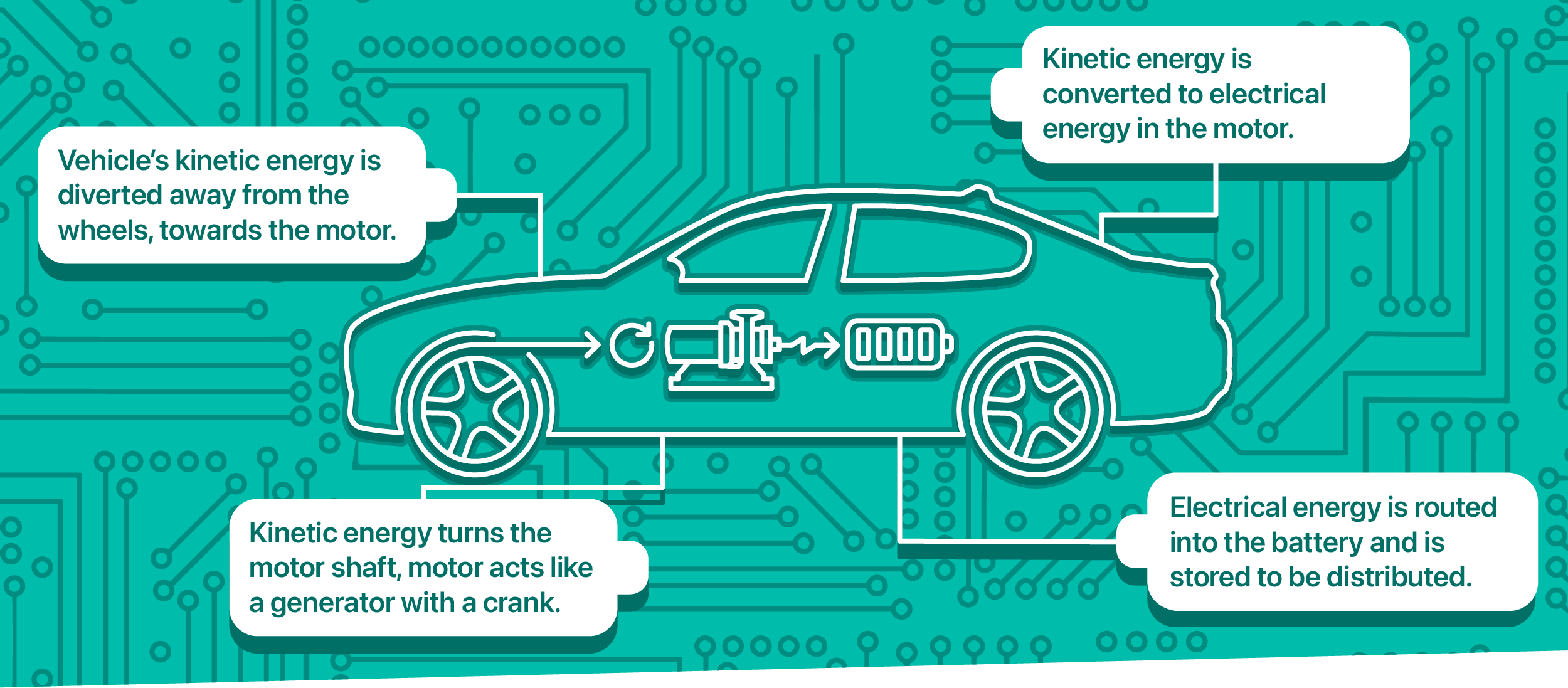
What is Regenerative Braking and How Does it Work?
Find out everything you need to know about regenerative braking.
If you have been considering joining the electric car revolution, you may have heard the term ‘regenerative braking’ before.
Whether you already own an electric vehicle, or you’re looking into buying one, here is everything you need to know about regenerative braking: what it is, how it works, and its advantages and disadvantages.
What is Regenerative Braking?
Regenerative braking is where the wasted kinetic energy is from the process of slowing the car down and using it to recharge the batteries.
On an ICE (internal combustion engine) vehicle, this energy is wasted and lost as heat, but vehicles such as EVs and hybrids utilise it by using it to recharge the battery.
Around 70% of the kinetic energy that would be lost is recaptured during regenerative braking.
How Does it Work?
Regenerative braking works by reversing the process that drives the car forward. An electric car works by an electric battery powering a motor, which creates torque – rotational force – which powers the vehicle forward.
When you brake, the energy from your spinning wheels is used to reverse the direction of electricity from the motor to the battery. As soon as your foot leaves the brake pedal, the process begins.
It differs from model to model how much regenerative braking will take place when you lift off the pedal – in most electric cars you can tailor the way it feels to your own liking.

What Does Regenerative Breaking Feel Like?
Some people have described regenerative breaking to feel smoother and quicker than regular braking. In some models, you may be required to push down harder on the pedal.
Regenerative braking does feel different depending on the model of EV that you’re driving. You can alter the settings for your car to your liking.
Which Cars Use Regenerative Braking?
All electric and hybrid models use regenerative braking. It has been integrated into some newer petrol and diesel cars, but the harvested energy is usually used for a different purpose rather than the battery.
For example, it may be used to power auxiliary systems, such as the air conditioning unit or the power steering.
What are the Advantages of Regenerative Braking?
Some of the advantages of regenerative braking are:
-
Extends the range. Since the battery is being charged through regenerative braking, you don’t have to stop as often to recharge the car. This is especially useful when you’re far away from a charging station.
-
Minimised brake pad wear. Electric cars still use brake pads and discs, but regenerative braking does most of the hard work when slowing the vehicle down. This means the pads and discs are not worn down as quickly – which can mean that you don’t have to worry about unnecessary wear. It is still important to have your pads checked as a part of a regular service.
-
‘One pedal driving’ can make traffic easier. Traffic can be frustrating and tiresome as it is, so using the one-pedal method in an electric car can make things a bit easier.
What are the Disadvantages of Regenerative Braking?
There are some disadvantages to regenerative braking.
-
It may be less effective at lower speeds. Since you’re travelling at a lower speed, less kinetic energy is generated when you brake. So, if you’re taking a short, slow journey, regenerative braking may not be as effective.
-
Potentially less stopping power. Most of the time, regenerative braking will perform just fine. However, in certain situations it may not deliver the same stopping power that conventional brakes do, so you may need to press harder on the brakes to achieve the same effectiveness. This seems to be an outdated issue, mind - if you have a newer car model, you won’t notice any differences.
-
The brake pedal may feel different. This will only take some time to get used to, like any new car - but it is still worth noting.
What are the Best Ways to Use Regenerative Braking?
The time that regenerative braking comes in handy is during drives where you are stopping frequently, such as traffic or driving through cities.
The more you stop, the more energy will be captured. Avoid ‘stomping’ on the brakes suddenly and try to brake gradually to harness the most amount of power.
How Much Range Will Regenerative Braking Add?
A study by K.T. Chau for Alternative Fuels and Advanced Vehicle Technologies for Improved Environmental Performance, 2014, reported that regenerative braking can extend driving range by as much as 10%.
However, this will differ from model to model, and depend on your individual driving style.
Does This Change My Need for a Service?
Due to regenerative braking, your brake pads and discs should last longer on an electric car. However, this doesn’t mean that you can skip your electric car service. You can encounter other problems surrounding your brakes, such as rusting. You can book your electric car service with BookMyGarage and compare EV-qualified garages in your local area to suit your needs.
Book online today!